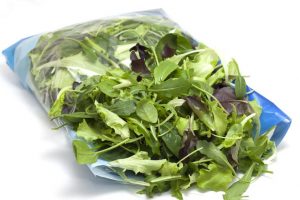The show opens with a discussion about privacy, whether you should cover the microphone on your computer, or how you can scare your kids using Alexa. The guys talked briefly about what they’re watching, Ben’s trip to Athens Georgia, and celebrity feet. From there the show moves into listener feedback talking about the safety of eating Canadian seaweed. Listener feedback makes a interesting segue into failure, and the things we can learn from it.  The show returns to listener feedback with a discussion about citrus safety and infused water. For some reason Don wants to talk about smoke detectors, before returning again to listener feedback and “Contamination Corner”, and ways to learn about stuff you don’t know about (like filibusters). Ben and Don talk about an interview that Don did for Cooking Light, before Don wants to talk about fixing his broken software. Ben ends the show with a long discussion regarding safe cooking directions for frozen vegetables, and why no one can agree.
The show returns to listener feedback with a discussion about citrus safety and infused water. For some reason Don wants to talk about smoke detectors, before returning again to listener feedback and “Contamination Corner”, and ways to learn about stuff you don’t know about (like filibusters). Ben and Don talk about an interview that Don did for Cooking Light, before Don wants to talk about fixing his broken software. Ben ends the show with a long discussion regarding safe cooking directions for frozen vegetables, and why no one can agree.
This episode is available at foodsafetytalk.com or on iTunes.
Show notes so you can follow along at home are below:
- The Talk Show ✪: Ep. 243, With Special Guest Rich Mogull
- Alexa, STOP! | Do By Friday
- The Tunnel (TV Series 2013–2018) – IMDb
- Schitt’s Creek – Wikipedia
- Creature Comforts Brewing Co.
- R.E.M. Athens Itinerary
- Fake nude of Rep. Alexandria Ocasio-Cortez busted by foot fetishist. | Someecards News
- Steven Tyler shows off twisted toes on the beach; rocker has Morton’s neuroma from dancing too hard in ill-fitting shoes – New York Daily News
- On the human consumption of the red seaweed dulse
- Town of Truro, that’s in Canada
- The Seaweed Resources of Eastern Canada
- Truro, Massachusetts, that’s not in Canada
- This Princeton professor’s amazing CV of failures is something we should all learn from
- Conchiolin – Wikipedia
- Susan Alber, UCLA article
- Susan Alber, Ph.D. | UC Davis Department of Statistics
- Restaurant Lemon Water Is a Sneaky Place for Germs | Reader’s Digest
- Microbial Flora on Restaurant Beverage Lemon Slices
- Enjoy infused water safely – MSU Extension
- Smoke Detectors Beep When the Temperature Drops | ThriftyFun
- Salmonella | FoodSafety.gov
- What is a Filibuster? – dummies
- FDA Bad Bug Book – Handbook of Foodborne Pathogenic Microorganisms and Natural Toxins
- Laboratory Methods > Bacteriological Analytical Manual (BAM)
- E. Jeffery Rhodehamel
- 8 Foods That Are NEVER Worth Saving for Leftovers – Cooking Light
- FoodKeeper App | FoodSafety.gov
- Mojave upgrade has broken Spotlight index… – Apple Community
- Pinnacle Foods Birds Eye Cheddar sauce Cauliflower Broccoli – cooking directions
- Multistate Outbreak of Listeriosis Linked to Frozen Vegetables | Listeria | CDC
- Recall & Advice to Consumers and Retailers Multistate Outbreak of Listeriosis Linked to Frozen Vegetables | Listeria | CDC
- FSIS – Revised Appendix A – June 2017
- FDA Draft Guidance for Industry: Hazard Analysis and Risk-Based Preventive Controls for Human Food Appendix 3: Bacterial Pathogen Growth and Inactivation
- FoodKeeper App | FoodSafety.gov
- Servsafe – Cooking Requirements for Specific Types of Food
- FSIS Safe Minimum Internal Temperature Chart
- FoodSafety.gov Safe Minimum Cooking Temperatures
- FDA Safe Minimum Internal Temperatures
- FDA Food Code 2017
- Safe Minimum Cooking Temperatures | Gordon Food Service
- Helpful Hints | Frozen Food Foundation
- 4 Cooking Mistakes You’re Probably Making With Frozen Vegetables – Cooking Light
- Food Safety Basics A Reference Guide for Foodservice Operators — Publications
- Food Safety in the Kitchen | Food Safety | CDC
- Richard Linton – Dean, College of Agriculture & Life Sciences








